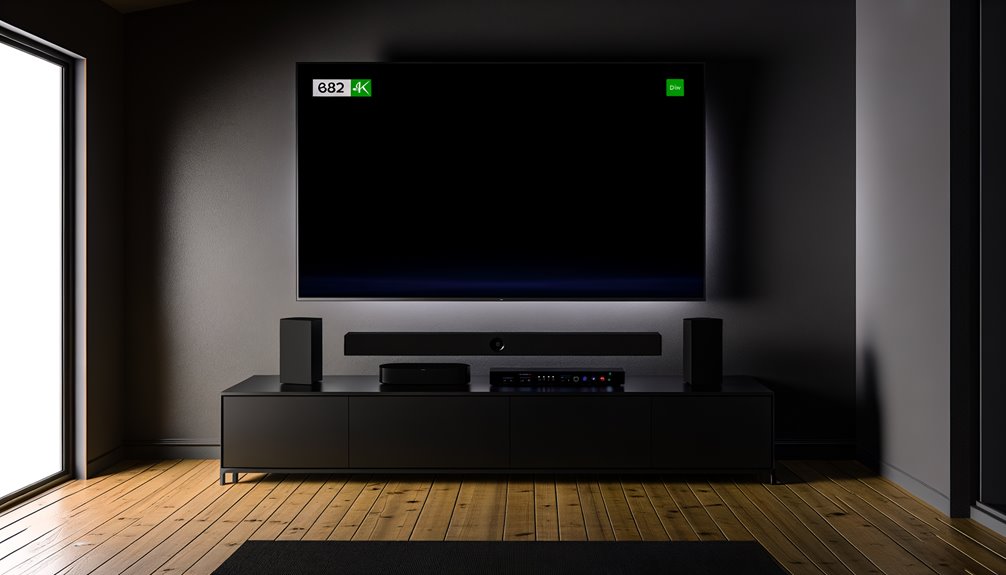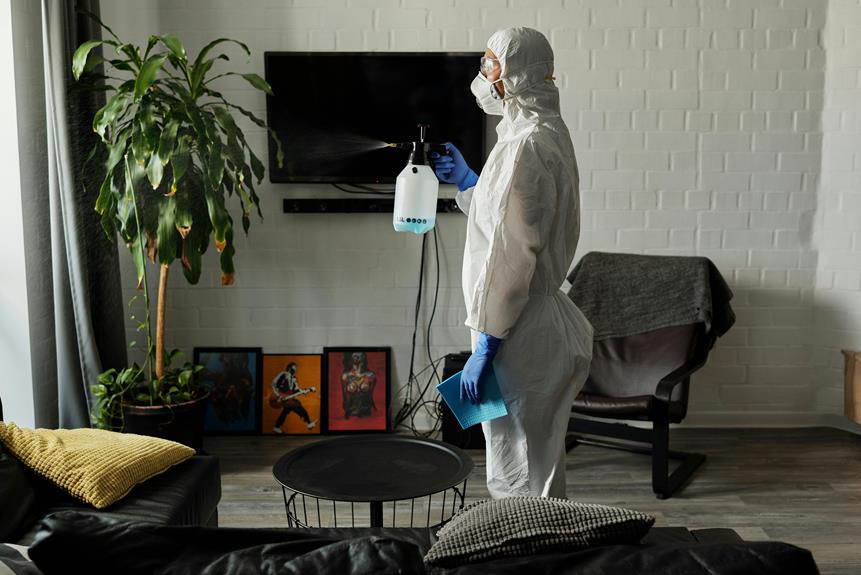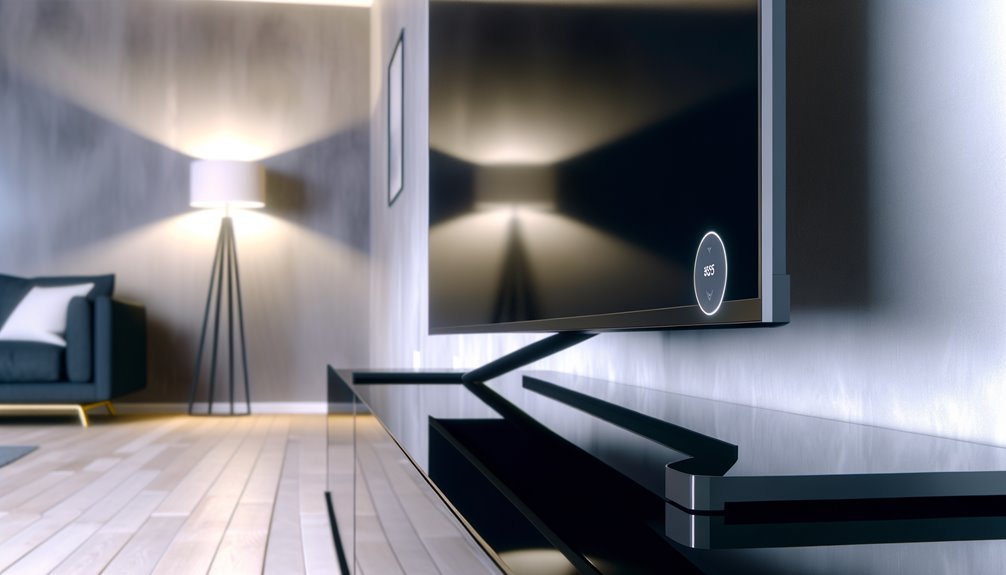Setting up a TV requires several fundamental steps, whether it's a smart TV or a standard model. Start by powering on and following the on-screen guide to select your language, adjust display settings, and connect to the internet for access to streaming services. For Wi-Fi-enabled TVs, navigate to network settings, select your Wi-Fi, and enter the password. Additionally, tailor your entertainment by downloading and signing into various streaming apps. For those using non-internet capabilities or accessing Freeview channels, guarantee proper connection to aerials or external video sources. Perfecting these setups enhances your viewing experience and opens up a world of media possibilities.
Initial Smart TV Setup
Setting up your new Smart TV begins with unboxing and connecting it to a power source. After which, you should power it on to initiate the on-screen setup guide.
Choose your language, adjust picture settings, and establish an internet connection. Opt for professional installation service if needed.
Finally, download essential streaming services to enhance your viewing experience, ensuring all steps are followed for ideal setup.
WiFi Connection Steps
Once your Smart TV is powered on and the initial setup is complete, the next crucial step is to connect it to WiFi. For a smooth TV setup, follow these steps for a secure WiFi connection:
| Step | Action |
|---|---|
| 1 | Go to Settings > Network. |
| 2 | Select WiFi. |
| 3 | Choose your network. |
| 4 | Enter password. |
| 5 | Confirm connection. |
Ensure your smart TV maintains a strong internet connection.
Streaming Services Configuration
After guaranteeing your Smart TV is connected to the internet, configuring streaming services becomes the next important step.
Most new smart TVs come with apps like Netflix pre-installed. If not, download them from your TV's app store. Sign in to customize and access your content.
Confirm your connection remains active to prevent interruptions. This setup is essential even if your smart TV is without a TV wall mount installation.
Non-Internet TV Usage
Although many users enjoy the benefits of internet connectivity on their smart TVs, it's entirely possible to operate these devices without an online connection.
For non-internet TV usage, begin the installation by connecting your TV to a power source and a video source like a DVD player.
Use the remote to complete the initial setup, select inputs, and adjust settings for new, ideal viewing experiences.
Accessing Freeview Channels
For those looking to expand their viewing options beyond DVD players or other external video sources, accessing Freeview channels is an excellent choice.
- Confirm your TV has a built-in Freeview tuner or connect a Freeview box.
- Connect an aerial to receive the signal.
- Use the remote to scan for channels.
- Adjust the aerial or set the correct TV input if channels aren't found.
Frequently Asked Questions
How Do You Set up a New TV?
To install a new television, focus on ideal cable management solutions, utilize smart TV features, and explore wall mounting options. Consider professional TV installation tips and refer to guides for troubleshooting common issues effectively.
Can I Pay Someone to Set up My TV?
Yes, you can hire professionals for TV installation services. They offer a range of options including remote control programming, wall mounting, and wire concealment, ensuring a seamless setup compared to standard DIY installation efforts.
Do You Just Plug a Smart TV In?
A smart TV's initial connection involves more than merely plugging it in. It includes Wi-Fi setup, app installation, and remote pairing to access full functionality and customization of Smart TV basics.
How Much Does It Cost to Have a TV Set Up?
TV installation prices vary, with average costs around £52.50. Budget-friendly options start at £25. Professional services may include additional features like wall mounting, which can increase expenses. DIY setup tips can help reduce costs.
Conclusion
In summary, the initial setup of a smart TV, which includes configuring WiFi connections, streaming services, and traditional broadcast options, is essential for maximizing the functionality of the device. Proper integration of these elements enhances the user experience by providing seamless access to a wide array of content. Additionally, the ability to access Freeview channels offers additional value, making it possible to enjoy a diverse range of programming without the need for an internet connection.



